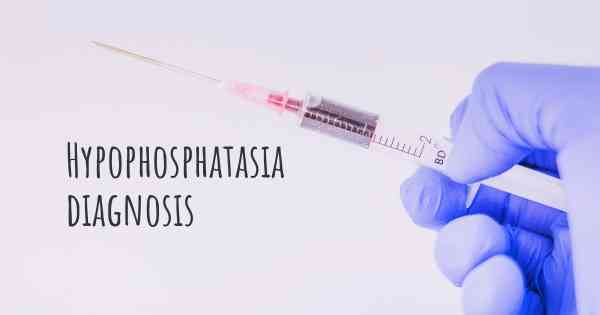How is Hypophosphatasia diagnosed?
See how Hypophosphatasia is diagnosed. Which specialists are essential to meet, what tests are needed and other useful information for the diagnosis of Hypophosphatasia

How is Hypophosphatasia diagnosed?
Hypophosphatasia (HPP) is a rare genetic disorder characterized by defective mineralization of bones and teeth. It is caused by mutations in the ALPL gene, which leads to low levels of an enzyme called alkaline phosphatase (ALP) in the body. Diagnosing HPP can be challenging due to its variable presentation and overlapping symptoms with other conditions. However, there are several key steps and diagnostic tools that healthcare professionals use to identify and confirm the presence of Hypophosphatasia.
1. Clinical Evaluation:
The diagnostic process for Hypophosphatasia typically begins with a thorough clinical evaluation. A healthcare provider, often a pediatrician or a specialist in metabolic bone disorders, will review the patient's medical history and conduct a physical examination. They will look for signs and symptoms associated with HPP, such as skeletal abnormalities, dental problems, growth retardation, muscle weakness, and respiratory difficulties. The presence of these clinical features can raise suspicion for Hypophosphatasia and prompt further investigation.
2. Biochemical Testing:
One of the key diagnostic tests for Hypophosphatasia is measuring the levels of alkaline phosphatase (ALP) in the blood. ALP is an enzyme that plays a crucial role in bone mineralization. In individuals with HPP, ALP activity is significantly reduced. A simple blood test can determine the ALP levels, and if they are abnormally low, it may indicate the presence of Hypophosphatasia. However, it is important to note that ALP levels can vary depending on age, so interpretation should consider age-specific reference ranges.
3. Genetic Testing:
Genetic testing is a definitive method to diagnose Hypophosphatasia. It involves analyzing the ALPL gene for mutations or changes that are known to cause HPP. Genetic testing can be performed using various techniques, such as DNA sequencing or targeted mutation analysis. This test not only confirms the diagnosis but also helps identify the specific type of Hypophosphatasia and provides valuable information for genetic counseling.
4. Radiographic Imaging:
Radiographic imaging techniques, such as X-rays, can be instrumental in diagnosing Hypophosphatasia. These imaging studies help evaluate the skeletal system and identify characteristic abnormalities associated with HPP. In infants and children, X-rays may reveal undermineralization of bones, rachitic changes, or evidence of fractures. In adults, X-rays may show signs of osteomalacia or pseudofractures. Radiographic findings, combined with clinical and biochemical data, contribute to a comprehensive diagnosis of Hypophosphatasia.
5. Bone Biopsy:
In some cases, a bone biopsy may be necessary to confirm the diagnosis of Hypophosphatasia. A small sample of bone tissue is extracted and examined under a microscope. The biopsy can reveal characteristic histological features, such as reduced mineralization, abnormal bone structure, or the presence of unmineralized osteoid. However, bone biopsy is an invasive procedure and is typically reserved for cases where other diagnostic methods are inconclusive.
6. Differential Diagnosis:
Given the overlapping symptoms of Hypophosphatasia with other bone and metabolic disorders, it is crucial to consider differential diagnoses. Conditions such as rickets, osteomalacia, osteogenesis imperfecta, and other forms of skeletal dysplasia may present similar clinical features. A comprehensive evaluation, including clinical, biochemical, genetic, and radiographic assessments, helps differentiate Hypophosphatasia from these other conditions.
In conclusion, diagnosing Hypophosphatasia involves a combination of clinical evaluation, biochemical testing, genetic analysis, radiographic imaging, and, in some cases, bone biopsy. The process requires a multidisciplinary approach involving healthcare professionals with expertise in metabolic bone disorders. Early and accurate diagnosis is essential for appropriate management and treatment of individuals with Hypophosphatasia.








